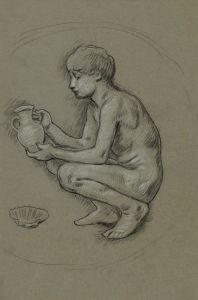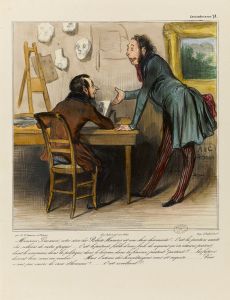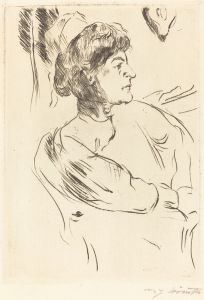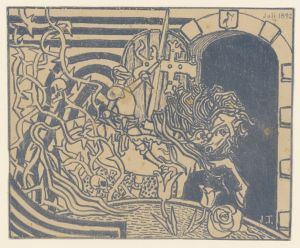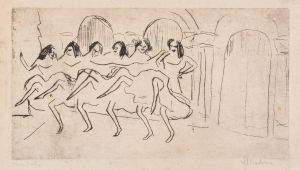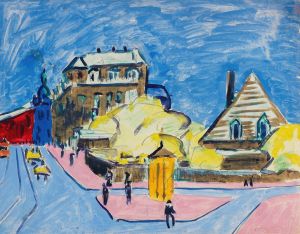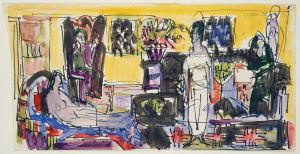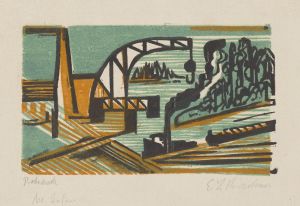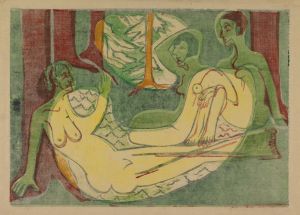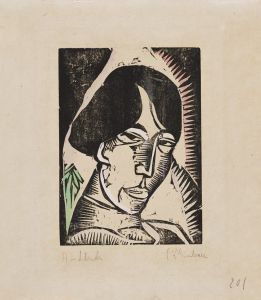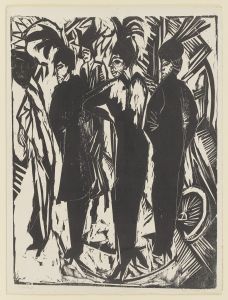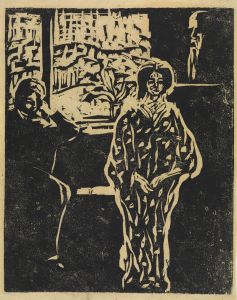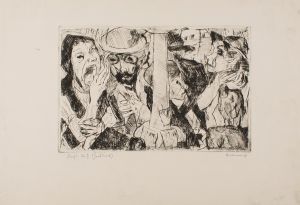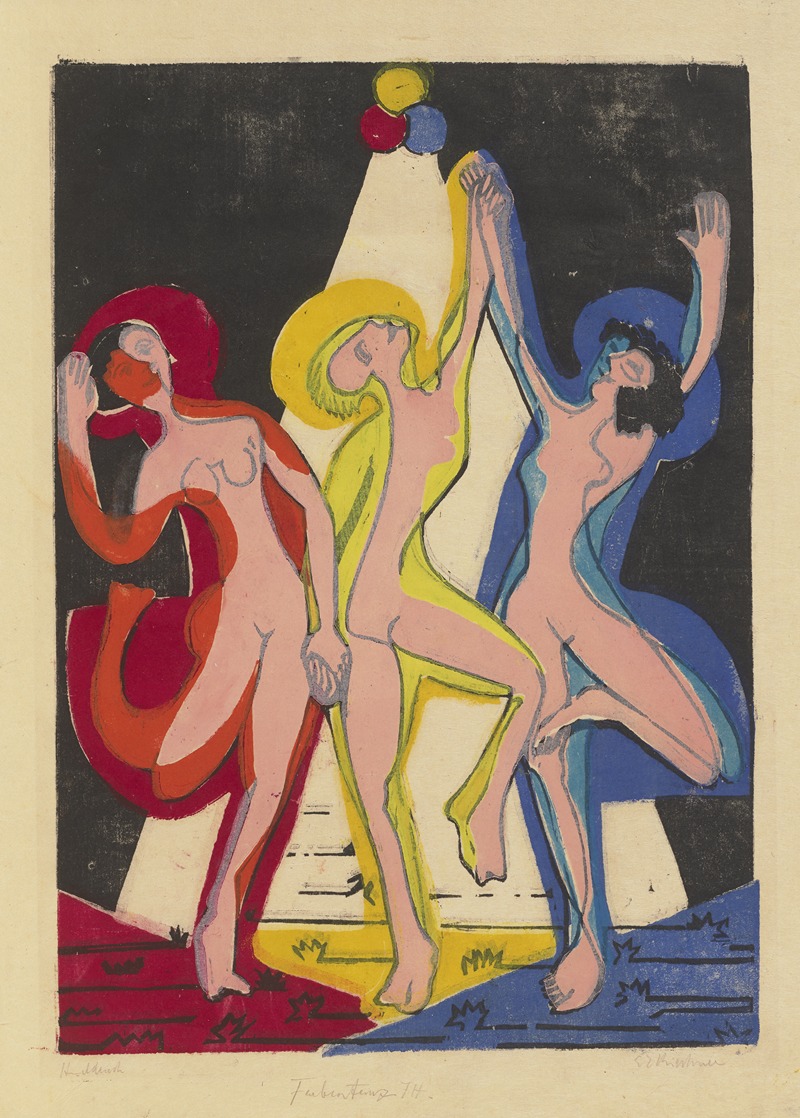
Dance of Colours
A hand-painted replica of Ernst Ludwig Kirchner’s masterpiece Dance of Colours, meticulously crafted by professional artists to capture the true essence of the original. Each piece is created with museum-quality canvas and rare mineral pigments, carefully painted by experienced artists with delicate brushstrokes and rich, layered colors to perfectly recreate the texture of the original artwork. Unlike machine-printed reproductions, this hand-painted version brings the painting to life, infused with the artist’s emotions and skill in every stroke. Whether for personal collection or home decoration, it instantly elevates the artistic atmosphere of any space.
Ernst Ludwig Kirchner was a prominent German expressionist painter and one of the founding members of the artist group Die Brücke (The Bridge), which played a pivotal role in the development of modern art in the early 20th century. Kirchner's work is characterized by its bold use of color, dynamic compositions, and expressive forms, which sought to convey emotional and psychological states.
"Dance of Colours" is one of Kirchner's notable works, exemplifying his distinctive style and artistic philosophy. Created during a period when Kirchner was deeply engaged with the ideas of expressionism, the painting reflects his interest in capturing the vibrancy and dynamism of modern life. While specific details about the painting's creation and history are limited, it is understood to be a representation of Kirchner's exploration of color and form as a means of expressing movement and emotion.
Kirchner's approach to painting was heavily influenced by his desire to break away from traditional artistic conventions. He sought to create a new visual language that could express the complexities of the human experience in the rapidly changing world of the early 20th century. "Dance of Colours" embodies this ambition, using vivid hues and energetic brushstrokes to create a sense of rhythm and movement. The painting's composition is likely to be non-representational, focusing on the interplay of colors and shapes rather than depicting a specific scene or subject.
The title "Dance of Colours" suggests a celebration of the expressive potential of color, which was a central theme in Kirchner's work. He believed that color could evoke emotions and moods in a way that was more direct and powerful than representational imagery. This belief is evident in the painting's dynamic composition, where colors seem to interact and dance across the canvas, creating a visual symphony that engages the viewer's senses.
Kirchner's work, including "Dance of Colours," was part of a broader movement within expressionism that sought to capture the essence of modern life. This movement was characterized by a rejection of realism and an embrace of abstraction and subjectivity. Kirchner and his contemporaries were interested in exploring the psychological and emotional dimensions of their subjects, often using distorted forms and exaggerated colors to convey their inner experiences.
Throughout his career, Kirchner faced numerous challenges, including personal struggles and the impact of historical events such as World War I. Despite these difficulties, he remained committed to his artistic vision, continuing to experiment with new techniques and ideas. His work has had a lasting impact on the development of modern art, influencing subsequent generations of artists and contributing to the evolution of expressionism as a major artistic movement.
In summary, "Dance of Colours" by Ernst Ludwig Kirchner is a testament to the artist's innovative approach to painting and his commitment to exploring the expressive potential of color and form. While specific details about the painting are scarce, it remains an important example of Kirchner's contribution to the expressionist movement and his enduring influence on the world of art.





![Study for ‘The Frenzy, and what came of it’ – [comment on riots and strikes in Pittsburgh and Chicago]](/imgs/214954/s/edwin-austin-abbey-study-for-the-frenzy-and-what-came-of-it-comment-on-riots-and-strikes-in-pittsburgh-and-chicago-35d74fec.jpg)
